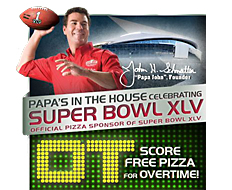You know the adage, “You’re known by the company you keep”? Whether we like it or not, we’re often judged by whom we know and hang around.
The same could be said about brands. In this day and age when almost everything is branded and brand messages seem to pop up everywhere, the other companies you choose to hang around with say a lot about your own brand.
In fact, the most progressive brands are those that position themselves as curators, serving up a collection of brands specially selected for their customers. Using this approach, brands like Starbucks, Apple, and Target no longer represent the attributes of a single product, service, or experience. Instead, the companies create value through a constellation of affiliated brands and products that form a sort of lifestyle web for their customers.
It really brings a whole new meaning to the term brand management. And it requires a new set of skills and a new way of thinking. But brand partnerships, which can take many forms, can meet a range of objectives.
First, these partnerships can strengthen your value proposition. You might partner with a brand that provides a value that complements your own offering, making what you offer even more meaningful and relevant to your target. Many of Dairy Queen’s Blizzards, for example, are cobranded with candy and cookie brands like Heath Bar and Oreo because these brands improve quality perceptions and make the products more special.
These relationships also promote your core brand attributes. By associating with complementary brands, you can draw more attention to your own brand values and positioning. That’s why Energy Kitchen, the “home of healthy burgers and wraps,” serves Honest Tea and Diet Coke but not regular-calorie soda. These brands help the chain promote the healthy choices Energy Kitchen wants to be known for.
Your brand can obtain “permission” from consumers through connections with other brands. Before you can credibly enter a new arena or serve new segments or markets, particularly those well outside your core competence, you need consumers’ permission. People must give you the benefit of the doubt. For example, partnering with a party supply company can help you establish your catering business. Same goes with product innovation; leveraging a partner’s technical expertise and resources is a way to fast-track your innovation pipeline. Look to partnerships for new menu items, ingredients, or equipment—and even for the ideas and resources to develop new concepts.
Partnerships can help your brand tap into cultural phenomena. To generate buzz and excitement, you can partner with a brand with the latest “in.” Papa John’s success with its Super Bowl promotion is a good example of how comarketing with a cultural brand can fuel a chain’s popularity. Further, they can help you extend media dollars or ad exposure. Co-op advertising with Coca-Cola and Subway’s tie-in with the Biggest Loser TV show are examples of how partnerships can bump up your exposure in media. You benefit from the additional coverage, as well as the salience of the other brand.
Not only can these partnerships help your media exposure, but they can also boost your general market awareness. Opening enough new locations to reach the tipping point of awareness and demand can be a lengthy and expensive proposition. Cobranding like Tim Hortons does with its self-serve coffee kiosks in Tops Friendly Markets can help a chain increase its market presence more quickly and easily.
Sometimes it makes sense to partner with a company that has a certain expertise so you can determine if you have what it takes to do it yourself. For example, partnering with Mobi Munch, which has a fleet of food trucks and an established customer fan base, is a smart way to dip your toe into the food truck business before you decide whether or not to take the plunge.
Finally, partnering with a branded nonprofit or charitable organization is an excellent way to add visibility to and gain traction with your values. A good example of this is Starbucks’ partnership with Conservation International, a nationally recognized and established organization, through which the chain advances its environmental stewardship.
A partnership can fulfill one or several of these objectives. By being clear about what your objective is, you can better evaluate potential partners and shape the programs.
You’ve also got to select your brand partners carefully. They should be strong brands in their own right. They should have broad or growing awareness, be relevant and differentiated, and have meaningful emotional connections with customers. They should be perceived as leaders in their industry by your target audience, or at least be on their way up.
Brand partners should operate in the same or adjacent value range as your own brand. If you’re an upscale chain, you don’t want to hook up with a value brand, or vice versa—unless you’re trying to reposition yourself.
When evaluating partners, it’s worth doing some homework to find out whether or not they’ve had successful experience with other marketing partnerships. And the best partnerships are sustainable over time and have a long-term benefit—doing a bunch of one-offs can be distracting and suck up a lot of resources.
Finally, a successful partnership should bring measurable value to both companies, paying out in terms of direct sales, customer acquisition, marketing efficiencies, and so on. Your partners should be willing to contribute financially or otherwise to the program.
Remember, it’s a partnership, not a charity.












